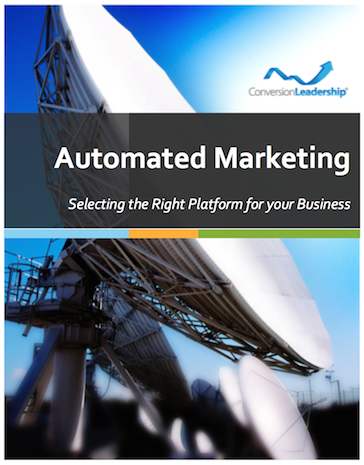How to Match Content to Your Target Audience

Not every customer and target audience responds well to the same content, yet time and time again businesses offer only one content approach.
When marketing teams are working hard at separating out leads and refining sales funnels, ignoring content just makes no sense.
Content needs to be matched to specific target audiences, and tailored to work in with your lead lifecycle.
First Step: Match Content to Target Audience
It's a basic principle of modern marketing that different groups of customers respond to different approaches. It's the foundation of most of the more sophisticated online marketing techniques. Yet when it comes to luring customers in with content, the vast majority of business websites fling their nets wide and hope for the best.
When it comes to content, you want to have a very clear description and understanding of each of the target audiences you are pursuing.
The level of detail you are able to get into your profiles/personas will determine just how closely you're able to align the content you create to the audiences motivations and interests.
Oddly, the better you know your target audience the more naturally your marketing language becomes, including appropriate identification of keywords (from a SEO perspective).
The devil is in the details... when you're able to identify your target audience with so much detail that if someone like your description walked into your place of business you'd immediately know what their first question was likely to be you've done well.
If you're still unsure about "the details" that we're talking about here; take a look at the following questions they'll give you an indication of what we mean by having details -
- If they are employed, how do they get to work? What do they do during the journey? What do they do as soon as they walk into their place of work?
- How much of their disposable income do they spend on themselves? On consumer electronics? On fashion? On hobbies? How much of their income do they save? What are they saving for?
- Where do they go for holidays? Who with? How often each year? For how long? What type of activities do they do when they're on holidays?
- What is their diet and health like? Is it a problem? What are the urgent problems? What sort of solutions are they looking for? Who are they getting advice from?
Getting this deep into the detail will give you ideas for topics and how to appeal informationally to your target audience. It also gives you some insights into how they prefer to consume content.
Here's a Content to Target Audience Matching Scenario to Consider
Let's imagine you're focused on attracting leads and have a target audience that commutes via public transport to work, and they use their smartphone to read a particular online newspaper (such as The Times) and check in with social media website Facebook.
Just knowing this you've discovered where it's important to have your content for them to get it - 'The Times online' and 'Facebook'.
Importantly you also know that the format for your content, needs to be suitable for a smartphone so that it can be consumed straight away.
Content can be an incredibly powerful marketing tool, but it needs to be used with as much delicacy as any other marketing technique. The needs of different target groups can be answered with the right content at the right stage of the conversion funnel, helping to nurture these groups along.
Content Mapping: What You Need to Know
Content mapping is much like the mapping of a lead in general. Once different leads are defined, and their needs determined, content needs to be crafted for each step in the lead lifecycle.
A Simple Content Mapping Example
As a very simple example, take a teenager with interests in surfing culture looking to purchase some shoes online.
With some specifics about their profile, you can aim some social validation content at them early on in the sales cycle. Then moving on to some content that pushes the value of a particular product selection. Finally through to content that cross-sells at the purchase stage.
This requires a very different set of content from a customer from an older target group interested in surfing culture or a same aged target group that isn't interested in surfing culture who coincidentally purchases the same pair of shoes.
Currently teenagers are heavily engaging with video and visual content, so creating this form of content would fit with the age of customers you are pursuing in this example.
Add in references or elements that capture surfing culture and you're now getting the attention of your teenager who is interested in surfing and able to appeal to them with your shoe offer.
The Key Stages to Map
In creating your content map for each target group, there are a few standard stages you'll need to cover:
- Initial awareness – address the customer in their initial research stage, when they are vaguely aware of your product but not yet personally attached
- Identification – when customers have begun to connect with the product and want more information about how it relates to them
- Research – customers have decided that they need the product and are considering alternatives
- Purchase – when the deal is made, but the customer needs continuing reassurance that their decision is a good one
- Follow-up – a continuation of the reassurance of the purchase stage, which should encourage customers to repeat the experience
Each of these stages is important, but there are some that are obviously more delicate than others. The Research stage, for example, may require more facts than the finesse of the Initial Awareness stage.
It's a good idea to test content for each of your lead types with a small group before your rollout your big campaigns and marketing assets.
Smaller organisations shouldn't be scared of attempting this approach either.
Your first attempts may not yield the results you hope for or expect and the learning curve will likely be steep. The outcomes from your next activities will get you results that outstrip anything you thought imaginable (guaranteed) if you stick with it and learn the lessons about your market as you go.
Unable to invest your time and resources into this sort of strategy? Then contact Conversion Leadership and discover how you can outsource your online activities to a team that works with you to achieve amazing results doing what's described in this article for you.

